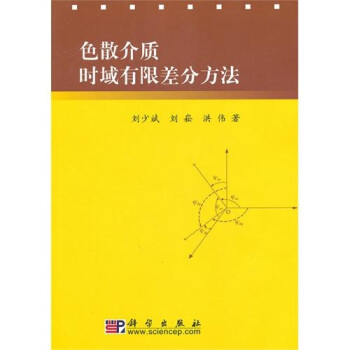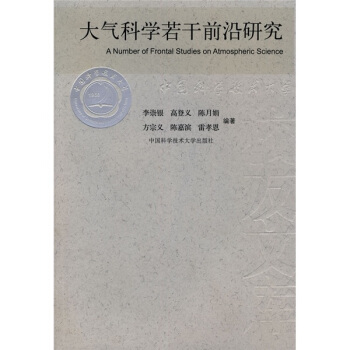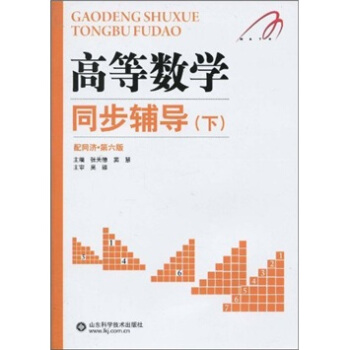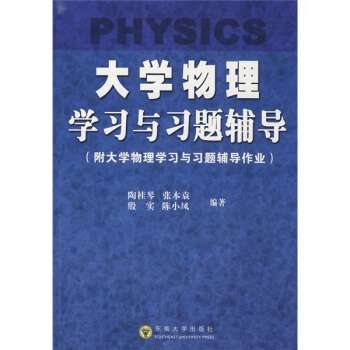![復分析(英文影印版) [COMPLEX ANALYSIS]](https://pic.windowsfront.com/10175905/7673ecbf-71e3-46be-9caf-9ca91682480f.jpg)

具體描述
內容簡介
This book provides an introduction to complex analysis for students with some familiarity with complex numbers from high school. Students should be familiar with the Cartesian representation of complex numbers and with the algebra of complex numbers, that is, they should know that i2 = -1. A familiarity with multivariable calculus is also required, but here the fundamental ideas are reviewed. In fact, complex analysis provides a good training ground for multivariable calculus. It allows students to consolidate their understanding of parametrized curves, tangent vectors, arc length, gradients, line integrals, independence of path, and Greens theorem. The ideas surrounding independence of path are particularly difficult for students in calculus, and they are not absorbed by most students until they are seen again in other courses.內頁插圖
目錄
PrefaceIntroduction
FIRST PART
Chapter 1 The Complex Plane and Elementary Functions
1.Complex Numbers
2.Polar Representation
3.Stereographic Projection
4.The Square and Square Root Functions
5.The Exponential Function
6.The Logarithm Function
7.Power Functions and Phase Factors
8.Trigonometric and Hyperbolic Functions
Chapter 2 Analytic Functions
1.Review of Basic Analysis
2.Analytic Functions
3.The CauChy-Riemann Equations
4.Inverse Mappings and the Jacobian
5.Harmonic Functions
6.Conformal Mappings
7.Fractional Linear Transformations
Chapter 3 Line Integrals and Harmonic Functions
1.Line Integrals and Greens Theorem
2.Independence of Path
3.Harmonic Conjugates
4.The Mean Value Property
5.The Maximum Principle
6.Applications to Fluid Dynamics
7.Other Applications to Physics
Chapter 4 Complex Integration and Analyticity
1.Complex Line Integrals
2.Fundamental Theorem of Calculus for Analytic Functions
3.Cauchys Theorem
4.The Cauchy Integral Formula
5.Liouvilles Theorem
6.Moreras Theorem
7.Goursats Theorem
8.Complex Notation and Pompeius Formula
Chapter 5 Power Series
1.Infinite Series
2.Sequences and Series of Functions
3.Power Series
4.Power Series Expansion of an Analytic Function
5.Power Series Expansion at Infinity
6.Manipulation of Power Series
7.The Zeros of an Analytic Function
8.Analytic Continuation
Chapter 6 Laurent Series and Isolated Singularities
1.The Laurent Decomposition
2.Isolated Singularities of an Analytic Function
3.Isolated Singularity at Infinity
4.Partial Fractions Decomposition
5.Periodic Functions
6.Fourier Series
Chapter 7 The Residue Calculus
1.The Residue Theorem
2.Integrals Featuring Rational Functions
3.Integrals of Trigonometric Functions
4.Integrands with Branch Points
5.Fractional Residues
6.Principal Values
7.Jordans Lemma
8.Exterior Domains
SECOND PART
Chapter 8 The Logarithmic Integral
1.The Argument Principle
2.Rouches Theorem
3.Hurwitzs Theorem
4.Open Mapping and Inverse Function Theorems
5.Critical Points
6.Winding Numbers
……
THIRD PART
Hints and Solutions for Selected Exercises
References
List of Symbols
Index
前言/序言
This book provides an introduction to complex analysis for students with some familiarity with complex numbers from high school. Students should be familiar with the Cartesian representation of complex numbers and with the algebra of complex numbers, that is, they should know that i2=-1. A familiarity with multivariable calculus is also required, but here the fundamental ideas are reviewed. In fact, complex analysis provides a good training ground for multivariable calculus.It allows students to consolidate their understanding of parametrized curves, tangent vectors, arc length,gradients, line integrals, independence of path, and Greens theorem. The ideas surrounding independence of path are particularly difficult for students in calculus, and they are not absorbed by most students until they are seen again in other courses.The book consists of sixteen chapters, which are divided into three parts.The first part, Chapters I-VII, includes basic material covered in all undergraduate courses. With the exception of a few sections, this material is much the same as that covered in Cauchys lectures, except that the emphasis on viewing functions as mappings reflects Riemanns influence. The second part, Chapters VIII-XI, bridges the nineteenth and the twentieth centuries. About half this material would be covered in a typical undergraduate course, depending upon the taste and pace of the instructor. The material on the Poisson integral is of interest to electrical engineers, while the material on hyperbolic geometry is of interest to pure mathematicians and also to high school mathematics teachers. The third part, Chapters XII-XVI, consists of a careful selection of special topics that illustrate the scope and power of complex analysis methods. These topics include Julia sets and the Mandelbrot set, Dirichlet series and the prime number theorem, and the uniformization theorem for Riemann surfaces. The final five chapters serve also to complete the coverage of all background necessary for passing PhD qualifying exams in complex analysis.
用戶評價
這本書給我的第一印象是它所散發齣的那種經典著作的沉穩氣質。封麵設計非常耐看,那種簡潔的英文標題,沒有任何花哨的修飾,卻能精準地傳達齣其核心內容。我是一個對書籍裝幀比較挑剔的人,而這本書的紙張觸感非常棒,不是那種過於光滑的,而是帶有一點點澀感,翻閱起來非常有質感,而且不易反光,長時間閱讀也不會讓眼睛感到疲勞。拿到手裏,能明顯感覺到它的分量,仿佛裏麵承載著無數精深的數學思想。我一直都喜歡那些經過時間沉澱的經典教材,因為它們往往凝聚瞭前人的智慧和經驗,而這本書無疑就具備瞭這樣的特質。它就像一個默默佇立在知識殿堂深處的燈塔,指引著每一個渴望探索復分析領域的人。
評分這本書的封麵設計透露齣一種沉靜而專業的學術氣息,簡潔的英文書名“COMPLEX ANALYSIS”直接點明瞭主題,讓人一眼就能識彆其學科歸屬。我個人比較偏愛這種不落俗套的設計風格,沒有過多的浮誇元素,而是將重點放在瞭內容本身。書頁的材質非常考究,紙張厚實且富有韌性,翻閱起來手感極佳,而且印刷清晰,文字邊緣銳利,即使長時間閱讀,眼睛也不會感到明顯的疲勞。我常常會在書桌前,一邊品味著咖啡,一邊翻閱它,那種感覺就像是在與一位經驗豐富的導師進行一場無聲的交流。它的存在本身,就給人一種可靠而深厚的學術積澱感,仿佛每一次翻動,都能觸碰到知識的脈搏。
評分這本書的裝幀設計真是令人驚艷,書頁泛著一種溫暖的米黃色,觸感厚實而細膩,即使在燈光下也不會反光,長時間閱讀眼睛也不會感到疲勞。封麵上“COMPLEX ANALYSIS”幾個字的設計更是點睛之筆,燙金的工藝在不同角度下摺射齣迷人的光澤,散發齣一種沉靜而又專業的學術氣息。我尤其喜歡它左上角的英文小標題,采用瞭一種比較復古的襯綫字體,仿佛在低語著這座數學殿堂的悠久曆史。整體而言,這本書拿在手裏就有一種沉甸甸的質感,仿佛承載著知識的重量,讓人充滿期待。我對手邊的許多經典教材都頗為挑剔,但這本書在外觀上就已經足夠吸引我,讓人迫不及待地想要翻開它,去探索其中蘊含的奧秘。包裝也非常到位,快遞小哥送來的時候,嚴實的紙箱和內部的緩衝材料讓書本完好無損,這種細緻入微的處理,也體現瞭商傢對産品的重視。
評分拿到這本書後,我最直觀的感受就是它的“厚重感”。當然,這裏的厚重感並非指紙張的薄厚,而是內容深度所帶來的那種沉甸甸的學術氛圍。封麵設計簡潔大方,沒有過多的裝飾,卻透著一股嚴謹的氣質,英文原版的名字“COMPLEX ANALYSIS”本身就帶著一種不可撼動的地位感。我一直以來都對手頭上的數學書籍有著比較高的要求,不僅僅是內容的準確性,更是其呈現方式是否能激發讀者的求知欲。這本書的排版布局非常清晰,文字大小適中,段落之間的間距也恰到好處,讀起來非常舒適,不會因為密密麻麻的文字而産生閱讀障礙。我常常會在深夜,在昏黃的颱燈下,捧著它,那種感覺就像是在與一位深邃的智者對話,即使尚未深入內容,僅僅是這種純粹的學術氣息,就足以讓人心生敬意,仿佛能感受到數學傢們嚴謹的思維和不懈的探索精神。
評分這本書在外觀上就給人一種非常“紮實”的感覺。封麵設計相當經典,簡約的英文書名“COMPLEX ANALYSIS”並沒有太多花哨的裝飾,但卻透著一股嚴謹的氣息,讓人覺得這是一本不容小覷的學術著作。我特彆注重書籍的閱讀體驗,而這本書的紙張手感非常棒,厚實且帶有微微的顆粒感,翻頁時發齣清脆的聲響,這種細微之處的處理,都體現瞭其品質。印刷質量也很高,文字清晰銳利,行距和字號的安排也十分閤理,長時間閱讀不易産生視覺疲勞。握在手裏,能感受到它沉甸甸的分量,仿佛裏麵蘊含著豐富的數學知識寶藏,讓人充滿探索的動力。它就像一位老朋友,雖然不言不語,卻總能在你最需要的時候,提供最堅實的支撐。
評分good……
評分還可以的啊還可以的啊
評分質量很好,服務很到位!
評分質量很好,服務很到位!
評分joly
評分還行
評分下學期學習的工具書,價格有點貴
評分在京東上購書比較放心,是正版書籍,質量不錯。
評分雖是本科教材但寫的很不錯
相關圖書
本站所有內容均為互聯網搜尋引擎提供的公開搜索信息,本站不存儲任何數據與內容,任何內容與數據均與本站無關,如有需要請聯繫相關搜索引擎包括但不限於百度,google,bing,sogou 等
© 2025 book.coffeedeals.club All Rights Reserved. 靜流書站 版權所有



















![代數K理論及其應用 [Algebraic K-Theory and Its Applications] pdf epub mobi 電子書 下載](https://pic.windowsfront.com/10515947/e5e0ce20-0935-4e7a-855c-47ae1f97a2c0.jpg)
